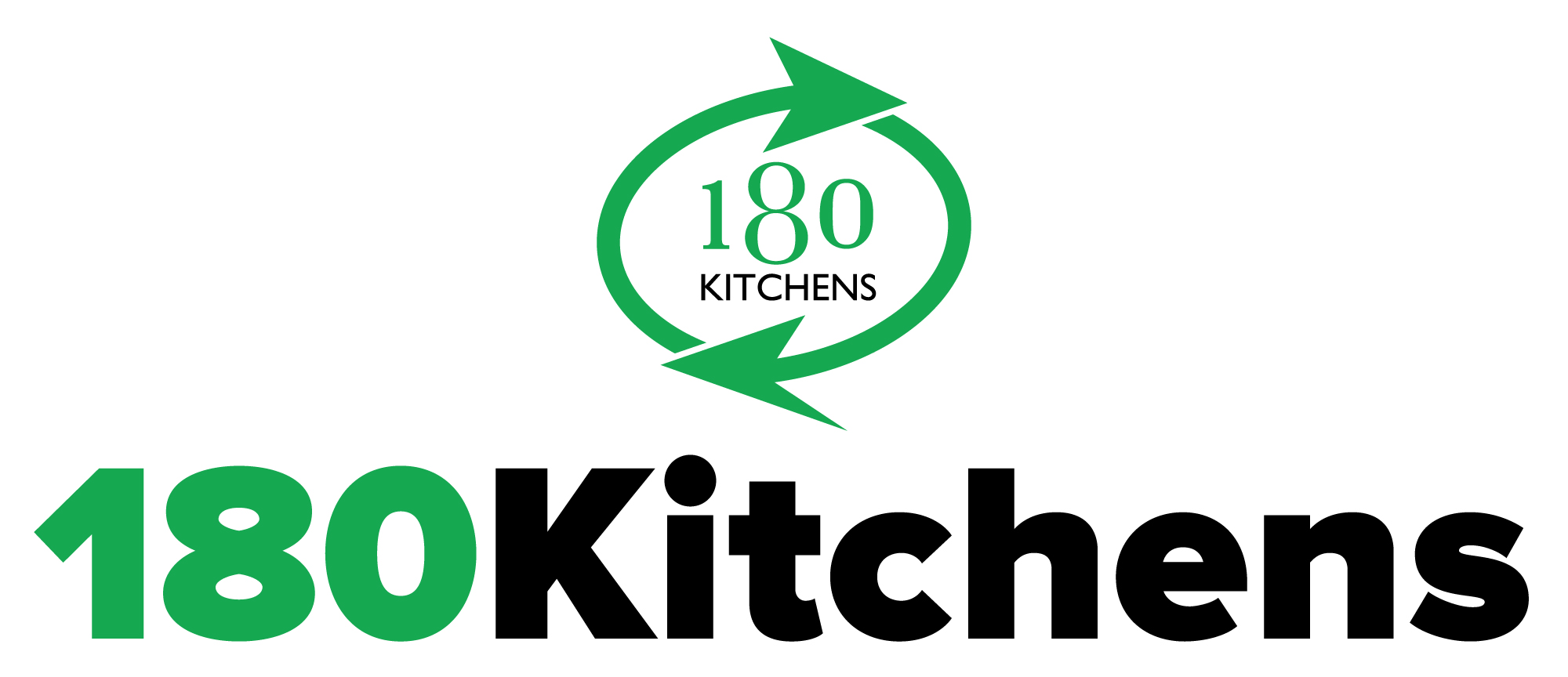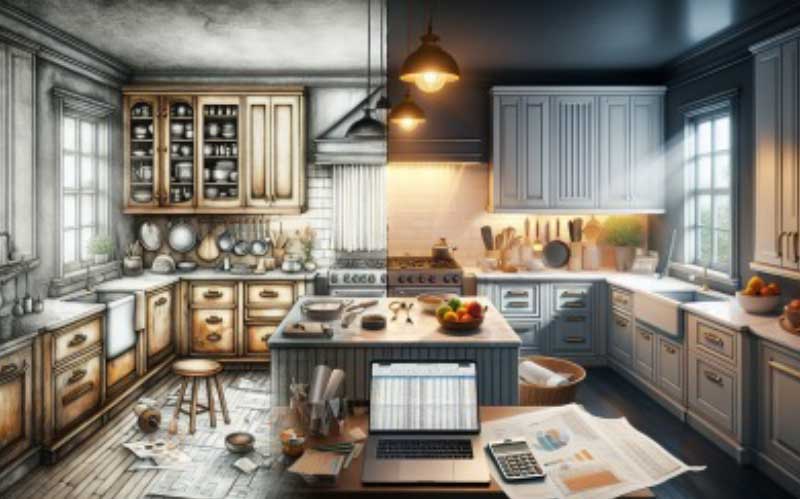Embarking on a kitchen renovation can be both exciting and daunting, especially when it comes to managing the budget. A well-planned kitchen renovation budget is crucial to ensure the project stays on track and meets homeowners’ expectations. From small upgrades to complete overhauls, understanding how much a kitchen remodel costs and how to allocate funds effectively can make the difference between a dream kitchen and a financial nightmare.
This step-by-step guide will walk you through creating a kitchen renovation budget that works for your needs and financial situation. We’ll cover determining the scope of your project, researching average costs in your area, allocating budget percentages to different aspects of the renovation, and exploring cost-saving strategies. By the end of this article, you’ll have the knowledge to plan your kitchen renovation with confidence, whether you’re working with a small kitchen renovation budget or planning a more extensive remodel.
Determine Your Kitchen Renovation Scope
To create a kitchen renovation budget, homeowners need to determine the scope of their project. This involves assessing the current kitchen layout and deciding between minor updates or a major overhaul.
Minor Updates vs. Major Overhaul
Kitchen renovations can range from small cosmetic changes to extensive structural modifications. A minor kitchen remodel typically involves surface-level updates without altering the original layout. This may include painting walls, refreshing the backsplash, replacing lighting and plumbing fixtures, re-covering floors, changing cabinet hardware, and upgrading some appliances.
On the other hand, a major kitchen renovation is more complex and expensive . It often involves significant changes to the floor plan, enlarging the space, and rearranging pipes, gas lines, or wiring. Major remodels may require extensive planning and construction, including alterations to the foundation, walls, or roof .
Assess Current Kitchen Layout
Before proceeding with a renovation, it’s crucial to evaluate the existing kitchen layout. Homeowners should consider the following aspects:
- Measure the available floor space accurately.
- Ensure doorways are at least 32 inches wide.
- Allow for passageways of at least 36 inches wide.
- Plan for work areas with a minimum walkway width of 42 inches for one cook or 48 inches for multiple cooks.
When designing the layout, consider the work triangle concept, which improves functionality by minimizing walking distance between the sink, refrigerator, and primary cooking surface . Additionally, plan for adequate counter space, with at least 158 total inches of usable countertop recommended by designers.
By carefully assessing the current layout and determining the scope of the renovation, homeowners can make informed decisions about their kitchen renovation budget and ensure the project meets their needs and expectations.
Research Average Costs in Your Area
To create an accurate kitchen renovation budget, homeowners need to research average costs in their area. The price of labor and materials can vary significantly depending on location, with urban areas and regions with a high cost of living generally being more expensive than rural areas .
Get Multiple Quotes
Obtaining multiple quotes from local contractors is crucial to understanding the cost landscape in your area. Experts recommend speaking with at least three local professionals to get a sense of the costs. However, it’s important to note that many contractors are currently very busy and may charge for providing detailed estimates .
To get meaningful quotes, homeowners should:
- Have a basic design or scope of work prepared
- Be clear about their budget
- Provide plans or drawings if available
Factor in Regional Price Differences
Regional price differences can significantly impact renovation costs. For example:
- A kitchen renovation in Toronto might cost $30,000-$50,000
- A similar renovation in Thunder Bay, Ontario, might cost $15,000-$25,000
Factors affecting regional price differences include:
- Labor costs
- Material costs
- Permit fees
- Local regulations
Building permits can add $140 to $1,500 to the overall cost, depending on your location and the type of work being done.
To account for these differences, homeowners should research local costs for labor, materials, and permits. This will help create a more accurate budget and avoid surprises during the renovation process .
Allocate Budget Percentages
When planning a kitchen renovation, it’s crucial to allocate the budget effectively across various components. Experts suggest setting aside 5% to 15% of your home’s value for a kitchen remodel. For a $300,000 home, this translates to a budget range of $15,000 to $45,000.
Cabinetry and Hardware
Cabinetry is typically the most significant expense in a kitchen renovation, accounting for approximately 29% of the overall budget. Homeowners should plan to spend between 3.5% to 6% of their home’s cost on cabinets alone, not including installation. For a medium-sized kitchen, cabinet costs can range from $20,000 to $50,000, depending on the chosen tier.
Countertops and Backsplash
Countertops generally make up about 10% of the kitchen remodel budget. Costs can vary widely based on material choice, from budget-friendly laminates to high-end natural stone. For a medium-sized kitchen, expect to spend between $3,000 and $10,000 on countertops. Backsplashes, while less expensive, can still impact the budget, with costs ranging from $150 to $1,500 .
Appliances and Fixtures
Appliances typically account for 14% of the kitchen remodel budget. Most homeowners set aside between $10,000 to $15,000 for appliances. This range accommodates high-quality, versatile options without compromising on style or functionality.
Labor and Installation
Labor costs usually comprise about 17% of the total kitchen remodeling budget. It’s wise to allocate at least 15-20% of the project budget for professional installation services. This ensures a polished end result and can help avoid costly mistakes.
Consider Cost-Saving Strategies
DIY vs. Professional Work
Homeowners can save significantly by taking on DIY kitchen renovation projects. A DIY kitchen remodel typically costs $10,500 to $42,500, which is 15% to 30% less than professional remodeling. However, it’s essential to consider the complexity of the work. While painting walls or installing a backsplash can be manageable DIY tasks, more technical aspects like plumbing or electrical work may require professional expertise to ensure safety and compliance with local codes.
Refacing vs. Replacing
Cabinet refacing is a cost-effective alternative to full replacement, saving homeowners 25% to 50% compared to new cabinets. This process involves updating the cabinet exteriors while keeping the existing structure, which is both budget-friendly and environmentally conscious . Refacing typically takes 2-4 days to complete, minimizing disruption to daily life. For those on a tight budget, refacing offers a fresh look at a fraction of the cost of full replacement.
Energy-Efficient Upgrades
Investing in energy-efficient appliances can lead to long-term savings on utility bills. ENERGY STAR certified products offer superior energy savings without compromising performance. Simple upgrades like installing LED lighting with motion sensors or dimmers can significantly reduce energy consumption . Additionally, proper maintenance of existing appliances, such as regularly changing furnace filters and sealing duct leaks, can improve energy efficiency without the need for costly replacements.
To maximize savings, homeowners should consider a mix of DIY work for simpler tasks and professional help for complex jobs. Combining cost-effective strategies like cabinet refacing with energy-efficient upgrades can result in a budget-friendly kitchen renovation that doesn’t sacrifice quality or style.
Conclusion
Creating a well-planned kitchen renovation budget is key to turning your dream kitchen into reality. By following the steps outlined in this guide, homeowners can confidently navigate the complexities of kitchen remodeling while keeping costs under control. From determining the scope of the project to researching local prices and allocating funds wisely, each step contributes to a smoother renovation process.
Remember that flexibility and creativity can lead to significant savings without compromising on quality. Whether you choose to take on some DIY tasks, opt for cabinet refacing, or invest in energy-efficient upgrades, there are numerous ways to stretch your budget. For expert advice and to get started on your kitchen transformation, reach out to 180 Kitchens for a free estimate. We provide Kitchen Renovation services in Edmonton and Vancouver. With careful planning and the right approach, your new kitchen will not only enhance your home’s value but also improve your daily life for years to come.
FAQs
How should I determine the budget for my kitchen renovation?
A good guideline is to allocate about 5% to 15% of your home’s total value for a kitchen renovation. For instance, if your home is valued at $300,000, aim to set aside between $15,000 and $45,000 for the renovation. This range helps ensure a good return on your investment.
What are the steps involved in remodeling a kitchen?
The process of remodeling your kitchen should follow these steps:
- Step 1: Develop a detailed plan.
- Step 2: Begin demolition or preparation.
- Step 3: Update plumbing and electrical systems.
- Step 4: Install new drywall.
- Step 5: Paint the new walls.
- Step 6: Install cabinets and flooring.
- Step 7: Order and install countertops.
- Step 8: Add the backsplash.
How do I create a detailed plan for a kitchen remodel?
When planning your kitchen remodel, consider the following:
- Select the style of cabinetry.
- Decide on appliances.
- Plan the layout.
- Account for sufficient storage.
- Choose color schemes.
- Choose materials for the countertops.
- Select the type of flooring.
- Plan for adequate kitchen lighting.
What are some tips for planning a kitchen renovation on a budget?
To effectively plan a budget-friendly kitchen renovation:
- Thoroughly plan each aspect of the remodel.
- Consider DIY options where feasible.
- Obtain quotes from at least three different kitchen fitters.
- Maintain the existing layout to save costs.
- Prioritize essential upgrades.
- Opt to reface rather than replace cabinetry.
- Choose cost-effective materials.


Recent Comments